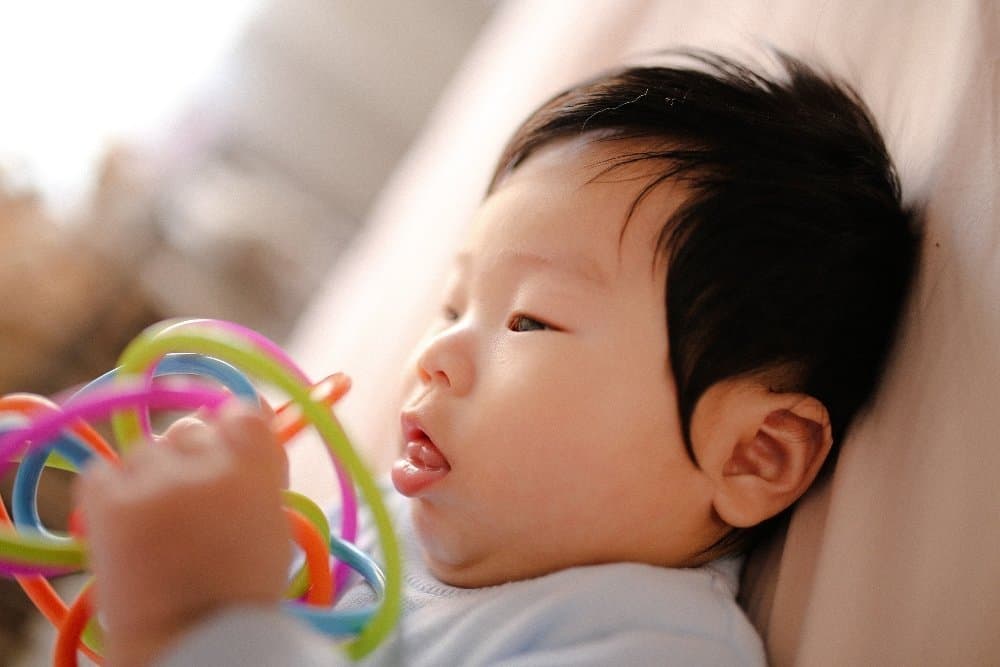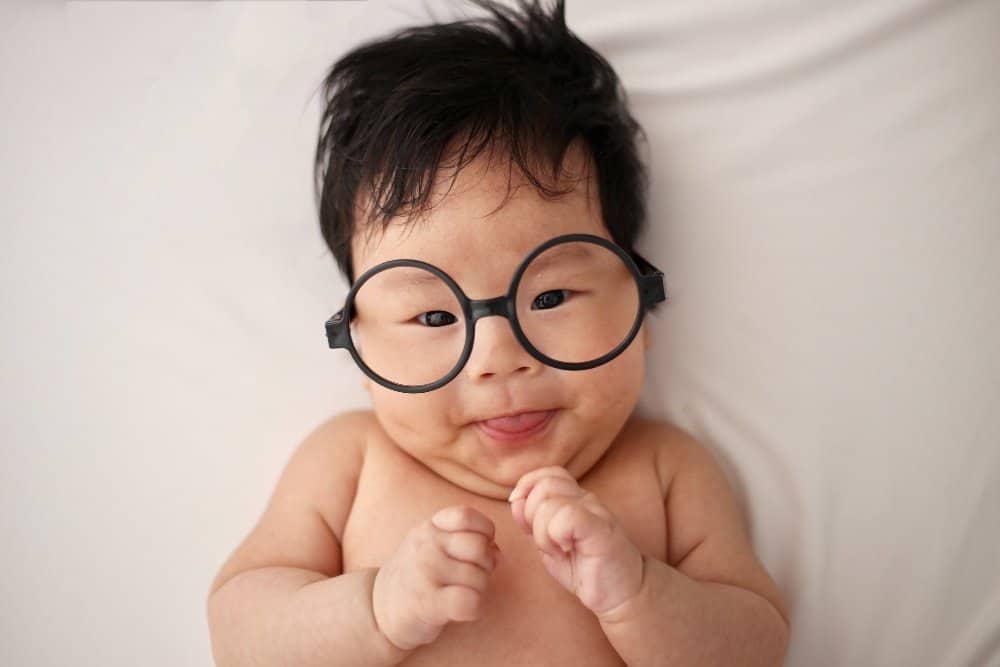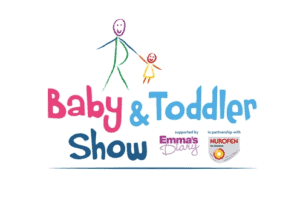AD | Featured / Affiliate Links
It can be difficult sometimes to recognise whether your baby is in full health, or if something isn’t quite right. This is usually down to the lack of communication skills that babies have, meaning they are unable to tell you if something is wrong!
Babies aren’t born with the same visual abilities that you have as an adult. Instead, their vision develops over time, just as they learn to crawl or walk. It’s important that babies’ eyes and sight develop correctly, as it could cause developmental delays. For this reason, as a parent, it is important to recognise any potential problems with your babies’ vision or eyes.
In some cases, glasses for babies may be necessary, depending on if there is a problem with your babies’ eyesight. Your optician can advise on the best lenses and frames. Many styles can be adjusted to suit young children’s faces, as the bridge of their nose will not have fully developed yet to fully support a standard frame style.

When should you get your baby’s eyes tested?
It can be very helpful to have your baby’s eyes tested at various points through their early life, in order to detect any problems that might occur while their eyes are developing. Most likely, your midwife or a health visitor will carry out a basic check within 72 hours of birth.
After that, the health visitor will likely carry out another check between 6-8 weeks. You may wish to have your baby’s eyes checked at 6 months, but your GP can do an additional check when they turn 1. Eventually, a full eye examination can be carried out by an optician when they reach 2 years old and should be checked every 2 years after that unless otherwise advised by your optician.
How babies’ vision develops
Babies’ vision develops as they grow older. When your baby is between 0-4 months, they can’t yet tell the difference between two targets. Their primary focus is on objects that are around 8-10 inches from their face.
By 8 weeks, babies are able to focus more easily on faces that are near to them. However, their eyes are not well coordinated at first. If this doesn’t improve over the next few months, consider taking your baby for an evaluation just to double-check everything is okay. Babies should be able to follow moving objects and reach for things at around 3 months of age.
Between the ages of 5-8 months, depth perception usually develops. Babies should have a good colour vision at 5 months, with the onset of crawling further improving good eye coordination.

Problems to look out for
As a parent, there are some symptoms you can look out for in your baby’s eyes and sight. There are also some conditions that may be more common in a child your age, so it’s important to be aware of them.
Strabismus, or a squint, is a condition where the eyes point in different directions. If left untreated it can lead to amblyopia or a lazy eye. It is important to detect and treat early to ensure vision in both eyes can develop properly.
Blocked tear ducts occur in around 1 in 5 babies. It’s not serious and it does usually clear by itself, but the eyelid might become sore and conjunctivitis may develop. You should look for a red lump or swelling in the inner corner of the eyelids; this could indicate a more serious infection.
A retinoblastoma is a rare form of eye cancer than is almost exclusively found in young children. Survival and treatment success rates are very high if it is detected early. Look for a white reflection in the pupil or a change in colour of the iris; if you see either of these changes in your baby’s eyes, take them to see a medical professional.





























No Comments